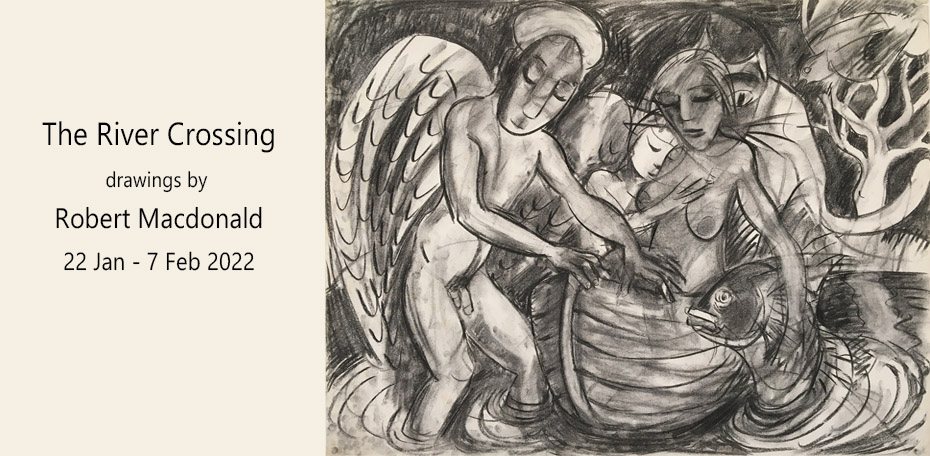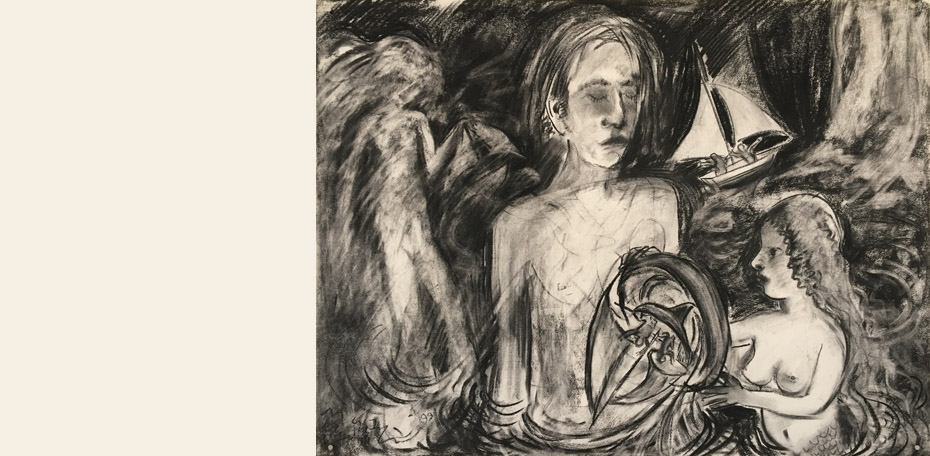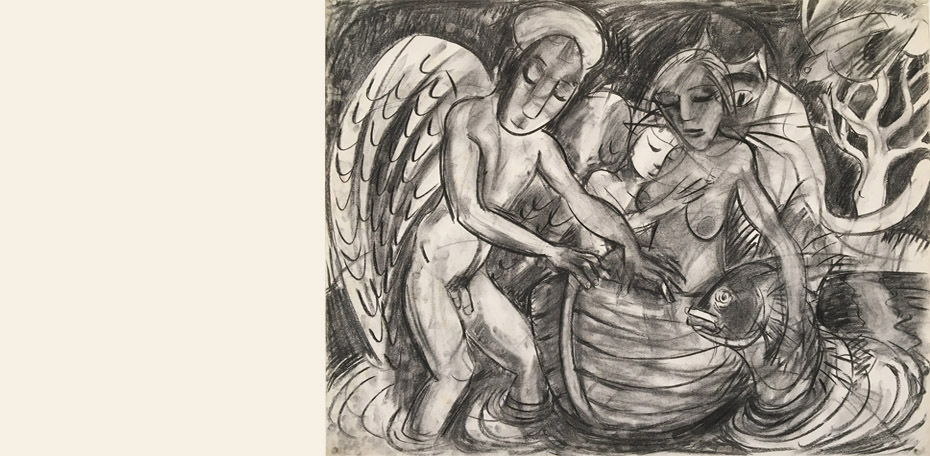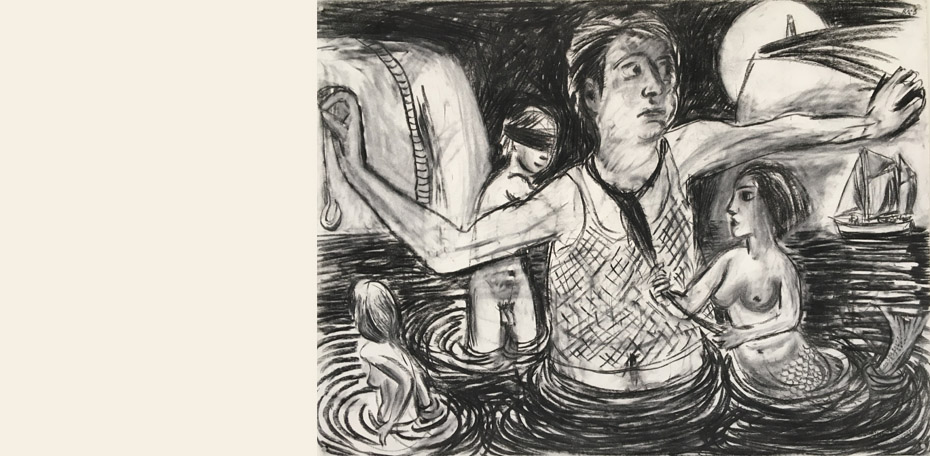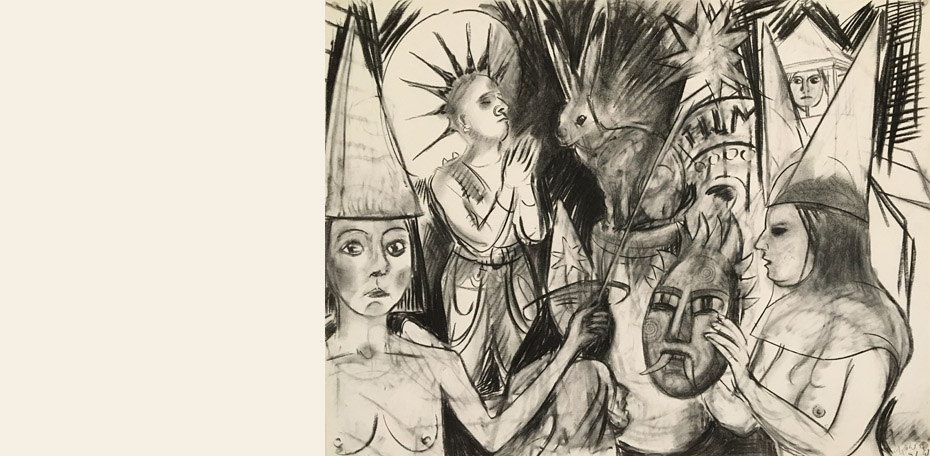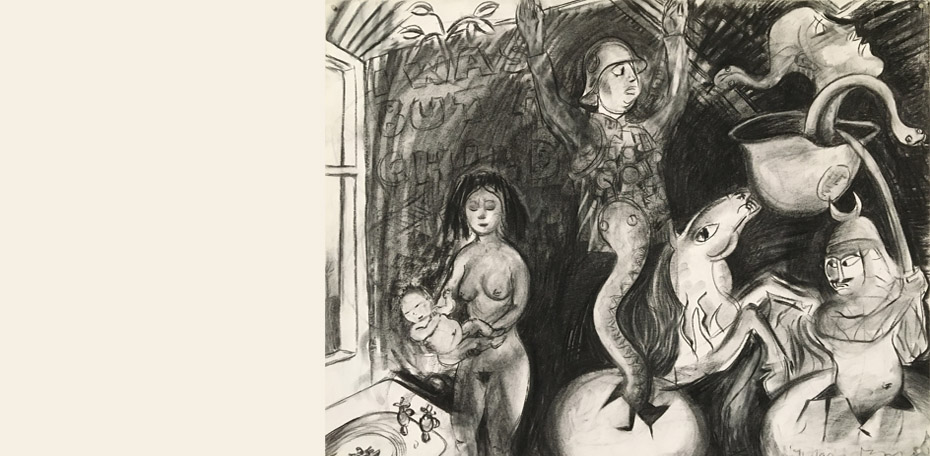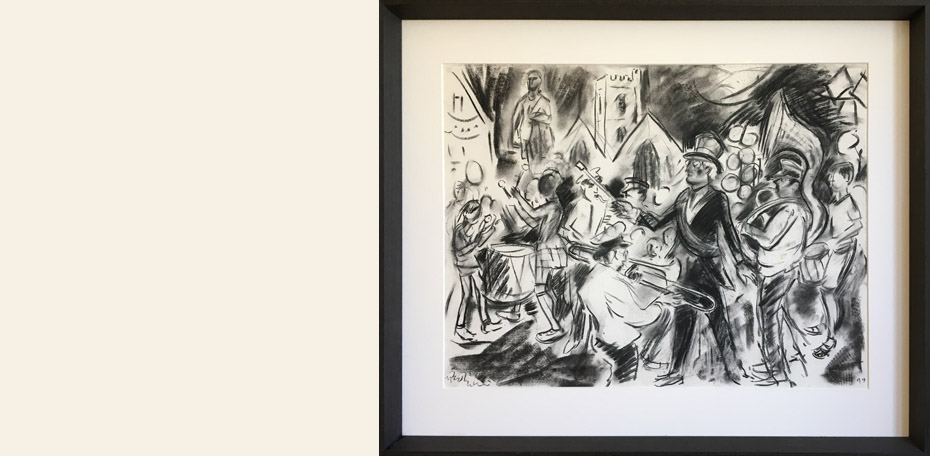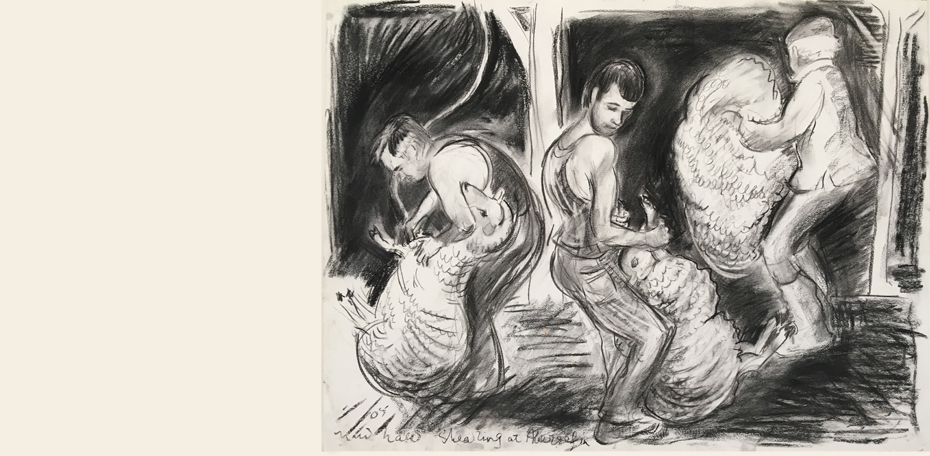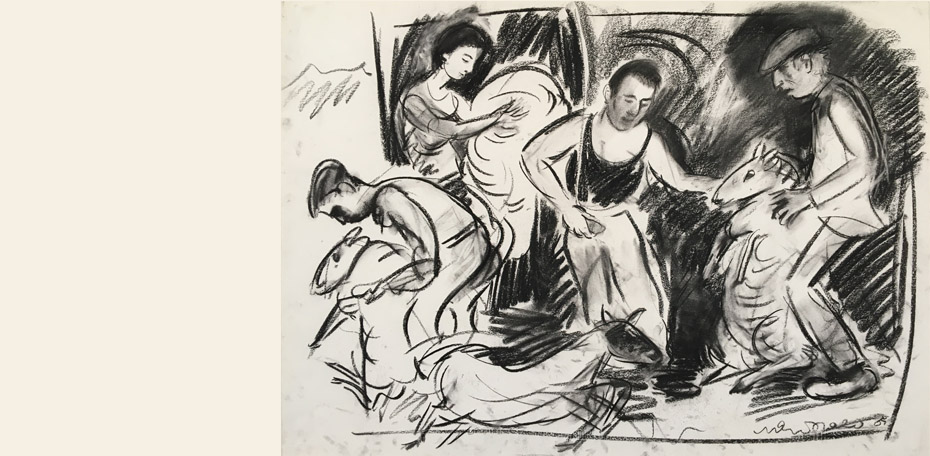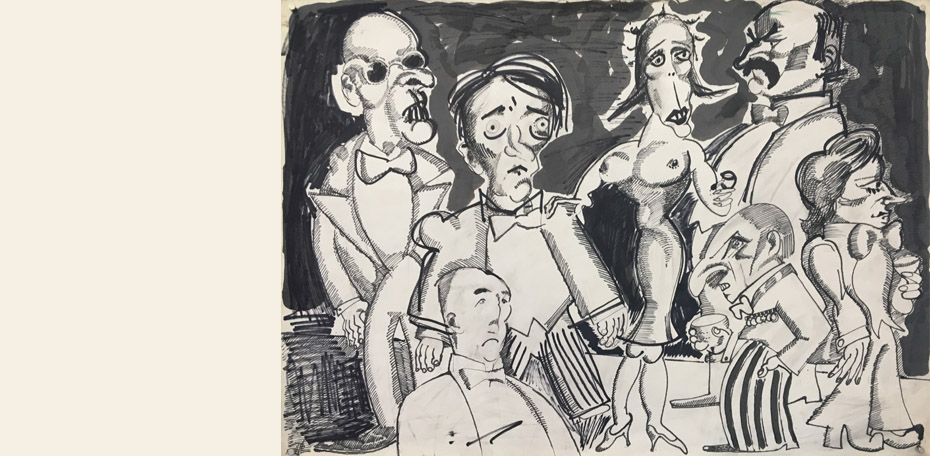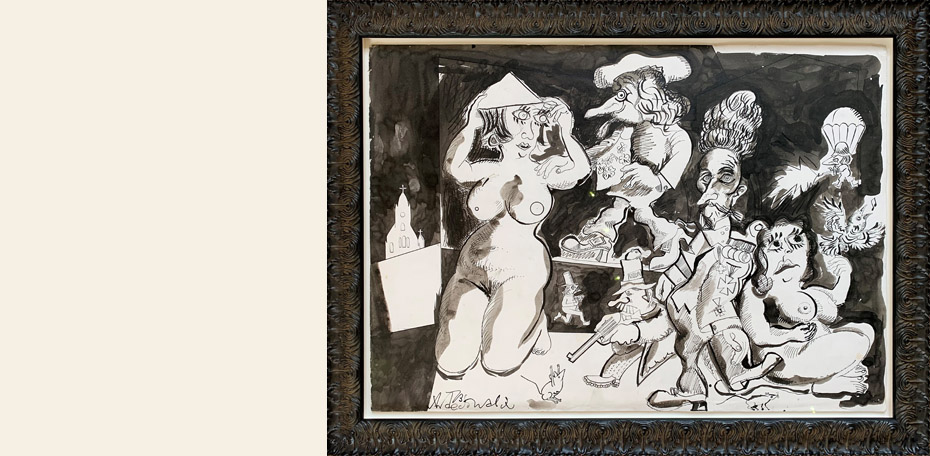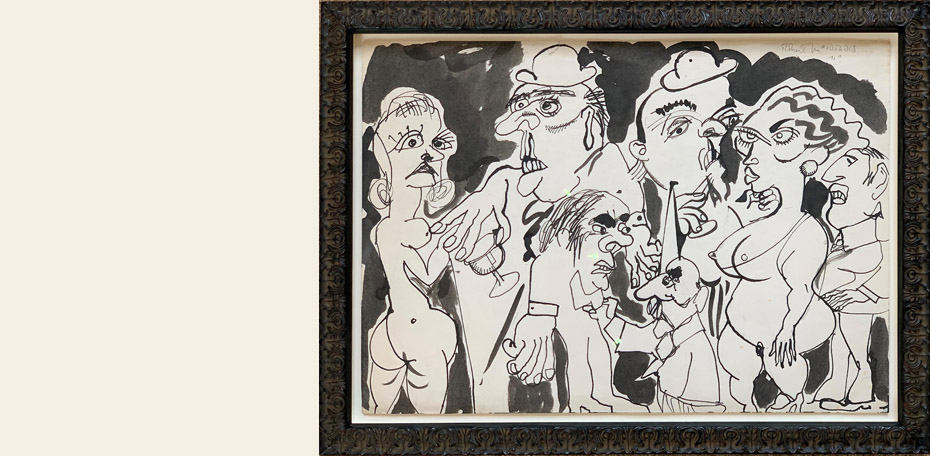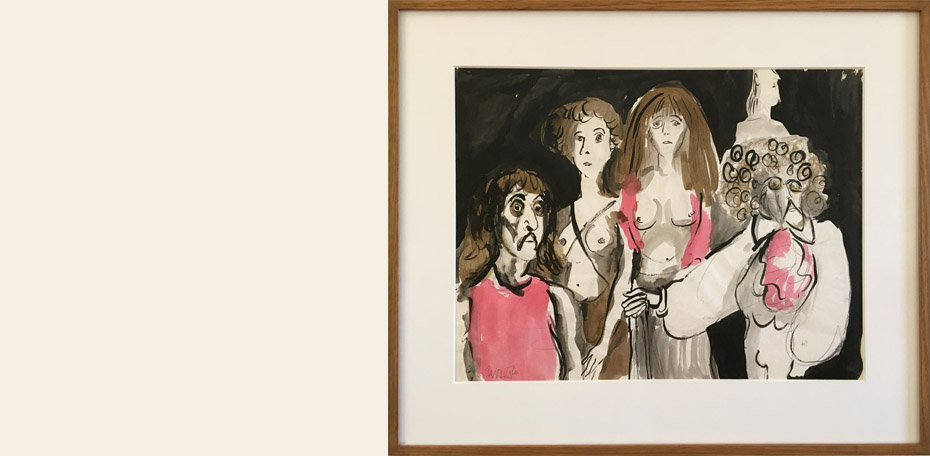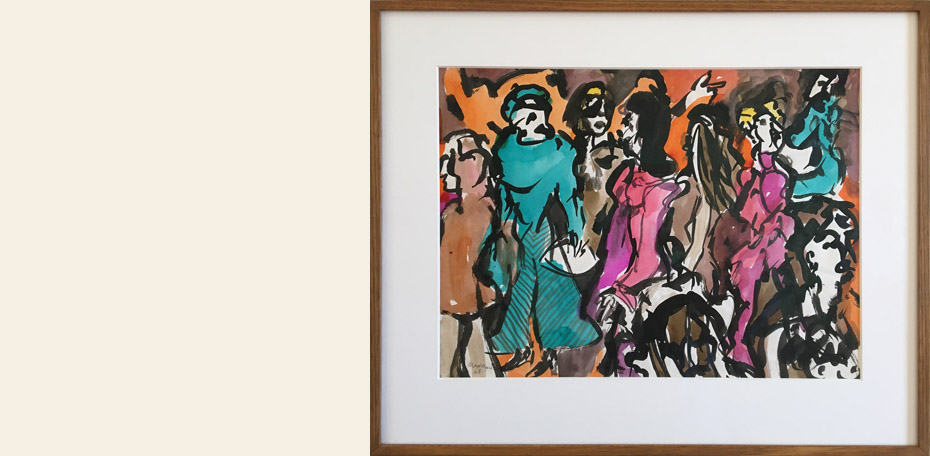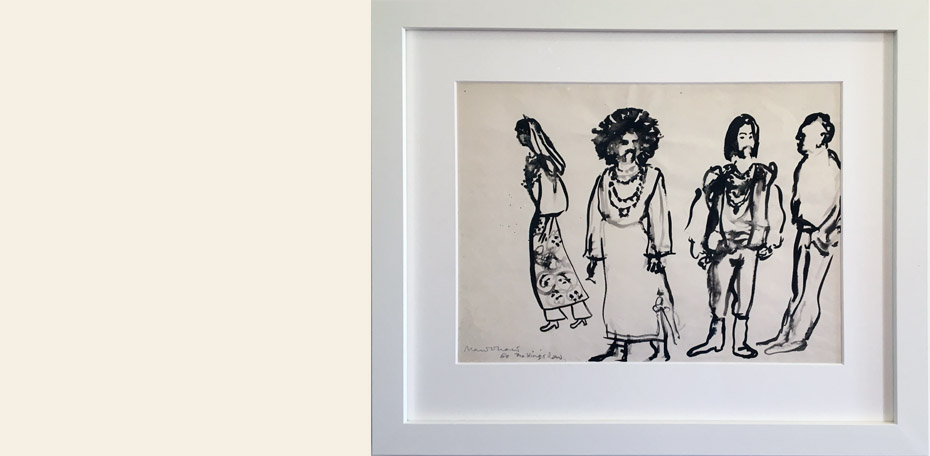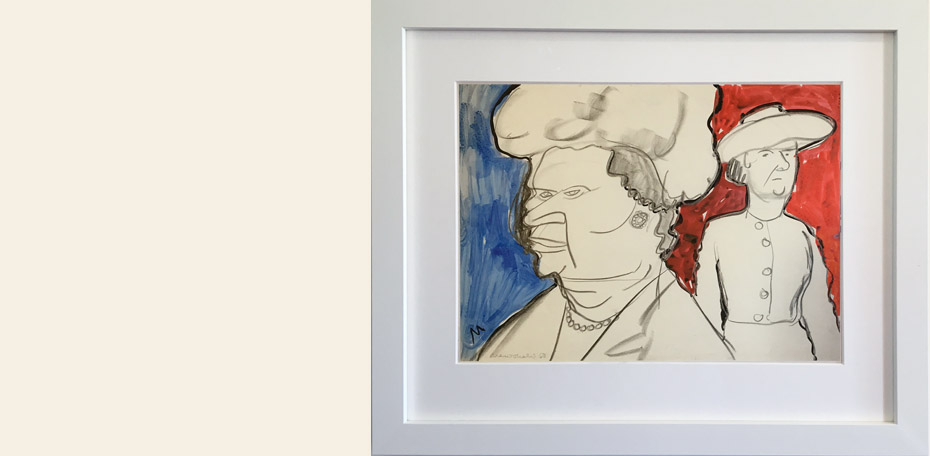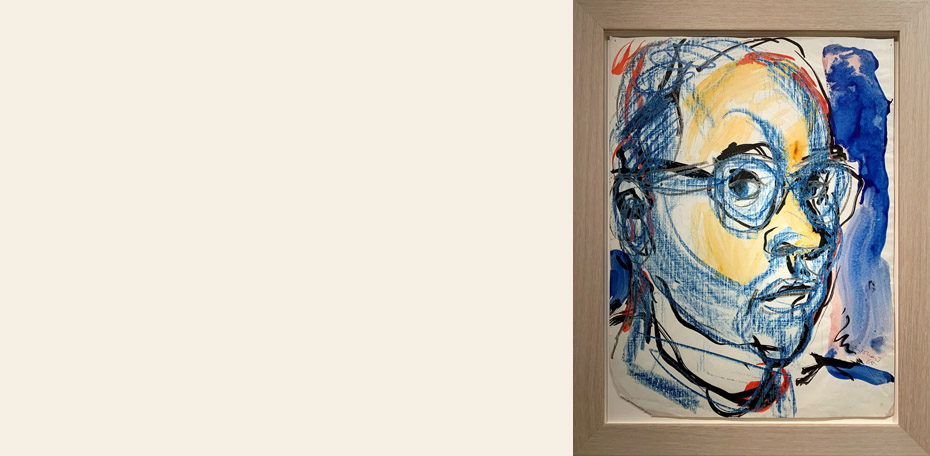As a trainee journalist in Hamilton in the 1950s, working for the Auckland-based NZ Herald, the teenage Macdonald would often drop into Paul’s, the Hamilton bookshop. It had a very good art department with all the latest art books from Europe. In one of these books, he read Paul Klee’s dictum to artists to ‘take a line for a walk’. When he began painting, he followed this advice, allowing his unconscious to direct his image making.
In fact, he had an overloaded unconscious. He lived in England throughout World War II and as a child experienced bombing and homelessness. He was an evacuee in Somerset for three years after his family were scattered, having lost their home in a bombing raid. Travelling to NZ at the age of 10 to join his father (who had gone there to work early in 1945), he and his siblings resolutely turned their backs on their turbulent childhood experiences and very quickly adopted the personalities of typical young Kiwis. But when Macdonald began painting, his first images were very directly related to these disturbed memories, though at first, he did not recognise the underlying meaning of many of his pictures.
Working as a journalist, he was an admirer of painters such as Daumier, a satirical observer of the world around him, and a commentator on politics. NZ had produced great political cartoonists such as David Low. Early on Macdonald thought his artistic destiny might lie in this direction, but no matter how he tried to be a commentator on life, the irrational kept pushing up in his picture making. He was fascinated by myth and legends and by the art of so-called primitive cultures. Discovering the writings of Carl Jung, he realised that in all lives there is a mythic dimension and that one purpose of the artist is to explore this. For a time, he gave up trying to consciously dictate the direction of his paintings allowing his imagination full rein.
Macdonald went to live in an isolated cottage in Wales in the 1980s when he was writing his book on New Zealand and the Maori, The Fifth Wind. He stayed on in Wales after the book was published and for the first time began painting the landscape and the rural life around him. The myths and legends which abound in his part of Wales have fed into his artistic explorations but in his charcoal sketches he has also drawn sheep shearers at work in the barns around his present home and scenes from the jazz festival held each year in his nearby town of Brecon.
Macdonald is now a well-known artist in Wales and has been chair of the Welsh Group (the senior association of professional artists in Wales), is currently president of the Royal Watercolour Society of Wales and a director of the Swansea Printmaking Workshop. His prints have been exhibited widely in the UK and internationally in Brussels, Holland, USA, Germany, Pakistan and New Zealand, and are held in the Victoria & Albert Museum, London among other public collections. His Welsh watercolours have won many awards. In 2014 he became the first elected president of the Royal Watercolour Society of Wales and is a director of the Swansea Printmaking Workshop.
Click on the following links to see further works by Robert Macdonald Oils and Acrylics, Watercolours, Linocuts & Woodcuts, and Etchings & Lithographs.


